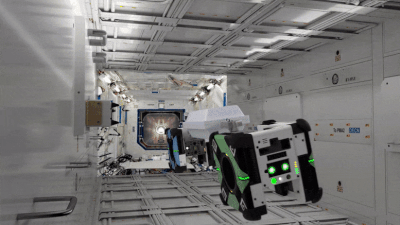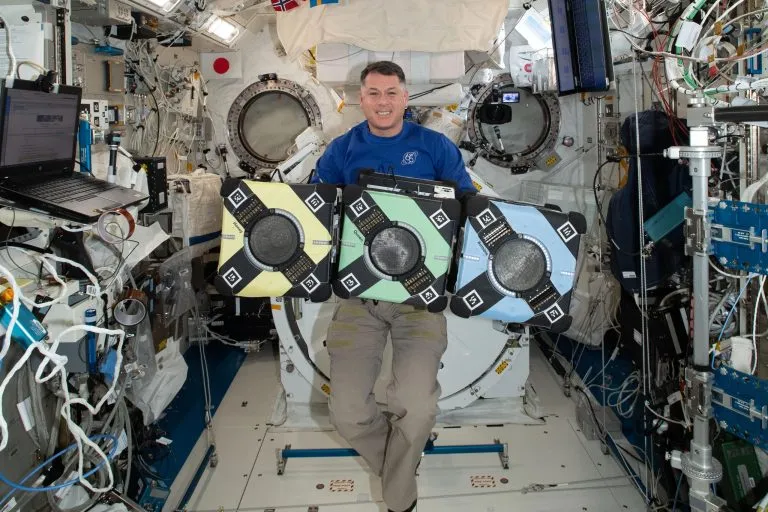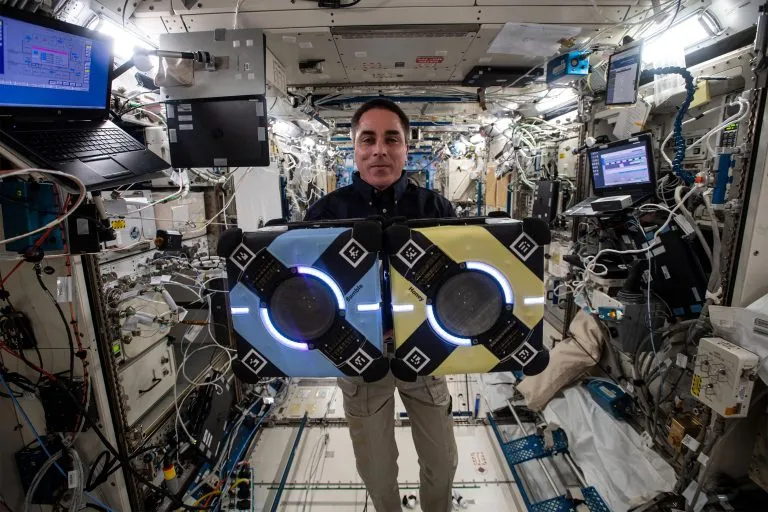Three Years Ago, Two Robots Were Launched To The International Space Station (ISS) To Help Pave The Way For Future Robotics And Space Autonomous Systems These Pioneers Were Honey And Bumble. They Soon Joined A Third "companion", Called Queen, Who Together Formed The Astrobee Free Flying Robot System. Robots Like Astrobees Are An Important Part Of NASA's Artemis Mission, Which Aims To Return Humans To The Moon And Then To Mars And Beyond.

"There's A Reason So Many Science Fiction Stories Have A Beloved Robot Fighting Alongside Human Heroes - We Know We Can't Explore Space Alone," Said Jose Benavides, Project Manager Of Astrobee Facilities At NASA Ames Research Center. "We Are Showing That Human And Robotic Systems Can Cooperate And Support Powerful Science And Engineering Beyond Earth."
Since Its Launch, The Astrobee Project Has Operated On The Space Station For More Than 750 Hours And Completed More Than 100 Activities, From Technical Demonstrations To Assisting Experiments. These Robots Have Demonstrated The Ability To Accomplish Feats In Previous Science Fiction, Such As Detecting Anomalies In The Simulation Of The Space Station And Connecting Autonomously To The Subsystem Of The Space Station. Honey, Bumble And Queen Have Been Busy Robots, And They Show No Signs Of Slowing Down.

Astrobees Project, Which Has Been Developing Continuously In The Past Three Years
Astrobees Is The Next Generation Technology, Which Is Based On Three Spherical Robots Of Synchronous Position Keeping, Meshing, Reorientation And Experimental Satellite (spheres) Project. Astrobees Evolved From Its Original Concept As Researchers Developed New Tools And Capabilities.
They Use Electricity fans Flying In Microgravity Environment, Cameras And Sensors Are Used To "see", And They Have Mechanical Arms To Grasp Objects Or Maintain Stability To Complete Tasks Requiring Stability. The Researchers Also Tested An Adhesion Technique, Inspired By Gecko Feet, That Allows Astrobees To Grasp Various Surfaces Without Force Adhesion And Then Disengage As Needed. The Astrobee Team Envisioned A Robotic System That Is Intelligent And Versatile Enough To Handle Simpler Maintenance And Monitoring Tasks, Allowing Astronauts To Freely Handle More Complex Tasks.
But The Astrobee Platform Is Not Just For Astronauts. Through The Annual Kibo Robot Programming Challenge Jointly Organized With The Japan Aerospace Research And Development Agency (JAXA), Now In Its Third Year, Students Around The World Can Write Code For Astrobees. The Winning Team Can See Their Program Running On Robots In Space. Motivating The Next Generation Of Programmers And Engineers Is Crucial Because NASA Is Preparing For The Future, And Robotics Will Play A Central Role In Human Exploration Beyond Our Planet.
Unlike The Space Station, The Future Deep Space Outpost May Not Have Staff All Year Round And Will Need An Autonomous System To Maintain Operation. This Includes The Gateway, Which Will Orbit The Moon And Serve As A Launch Point For A Mission To Mars.
The Integrated System Of Autonomous And Adaptive Care (ISAAC) Aims To Test How The Robot System Can Independently Complete The Tasks Of Repair, Maintenance And Even Experiment.

By Giving Honey And Bumble Challenges To Solve Themselves - Such As Removing "socks" That Block Vents - Isaac Is Building The Ability Of Robots To Take Care Of Spacecraft When Astronauts Are Not On Board. However, A Major Component Of Autonomous Operation In Complex Environments Is The Ability To Have A Detailed Map And Know Where You Are.
Two Recent Isaac Demonstrations Used Astrobees To Create 3D Maps Inside The Space Station. Bumble Flew Out Of Its Main Cabin And Painted A New Environment By Himself. The Ability To Explore And Draw Independently Is Crucial For The Future Of Autonomous Robots.

"Three Years Ago, We Wanted To Test How Robotics Can Support Human Space Exploration, Not Just In This Decade, But In The Coming Decades," Said Maria Bualat, Deputy Project Manager Of Isaac At Ames. "We Are Beginning To See What This Will Look Like."
